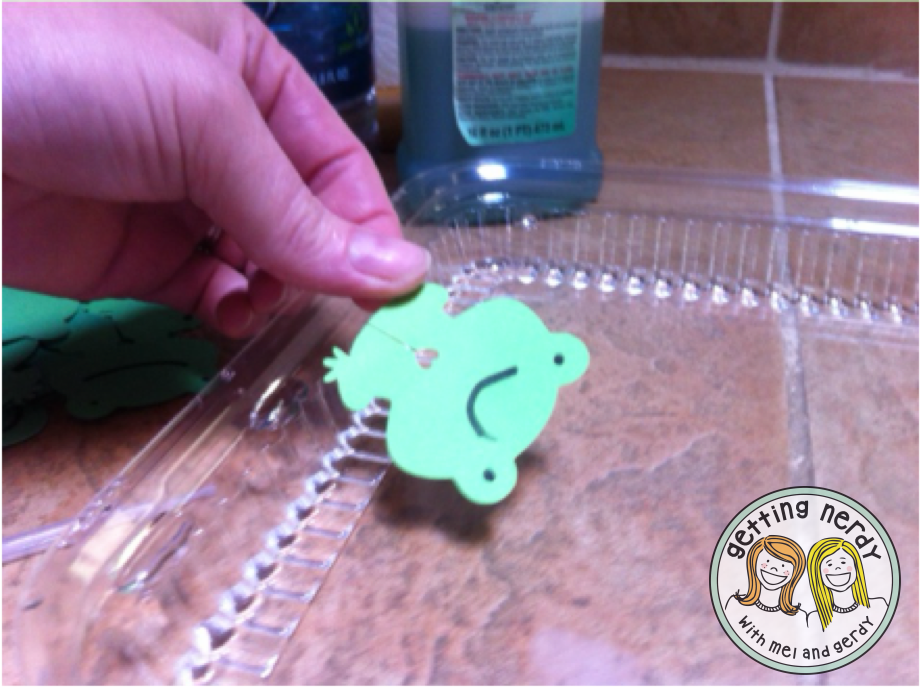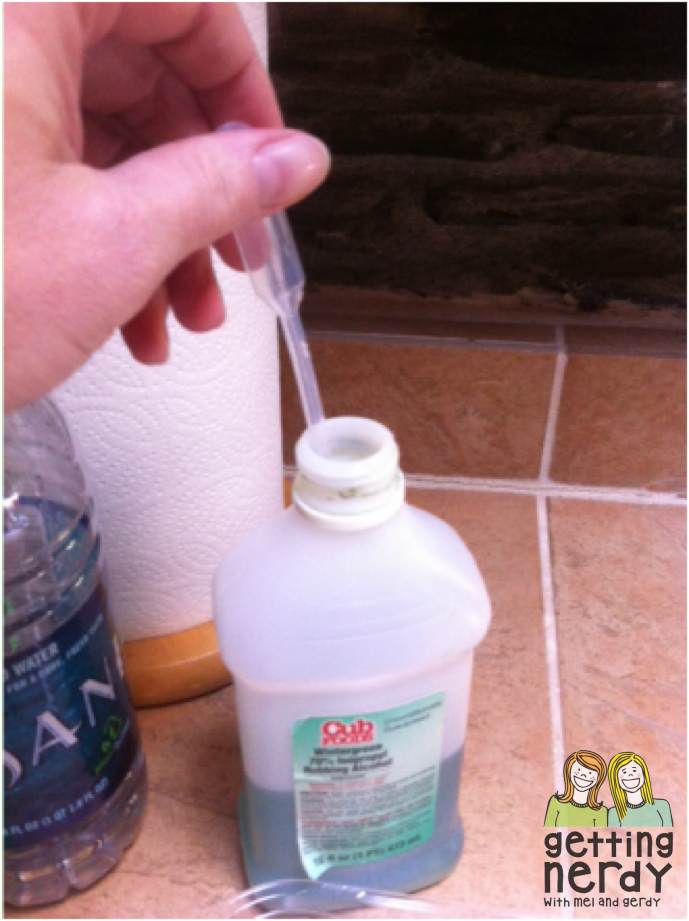
Explain It: Students will begin by learning about surface tension and surfactants, and how surfactants affect the behavior of water. Then provide students with a place to float their critters – a sink, a pan full of water, a cookie sheet – any of these will work. You’ll want something that has some distance in though, so make sure you consider that as you find materials. Students will then race their critters across the container of water to test which liquids act as the best surfactant.
Explore it: This is a great activity because it’s open ended for parents/teachers based on the materials you have, time constraints, and ability levels of kids. In our STEM Lab, we’ve included a template of six different 3″ critters that kids can cut out for their experimentation or they can make their own!
All students will need is a critter (or more if they’re doing multiple trials), a hole punch, stop watch, scissors, various surfactants (like rubbing alcohol, vinegar, oil, dish soap, etc), a pan of water, a ruler, and a dropper.

1. Have students carefully cut out the critter of their choice.
2. Using a hand held hole punch, they’ll punch out a hole in place of the dark circle on their critter.
3. Using scissors, cut along the dashed lines connected to the punched out hole to create a channel. The channel should be very small but not a slit.
4. Students will place their critter in the water face side up (because it’s cuter that way!). They should NOT touch the critter again, lest the critter drown. Students should prepare to time the critter’s travels by grabbing a stopwatch.



6. Using a stopwatch, have students measure how long in seconds it takes for their critter to come to a complete stop. Using a ruler they’ll measure how far their critter travels in cm across the “pond”!
Did They Get It? Students run several trials if needed and finish by filling in a data table, graphing their results, and then answering extension questions to check understanding.
- Have students learn about the chemical composition of each surfactant and why they affect the behavior of water the way they do.
- Have students try out different weights of paper and record and analyze any new data.
Need to Modify?
- Pre-cut the critters for students with fine motor skill deficits
- Lessen/increase the number of trials depending on student levels
- Review extension questions as a class
Happy teaching!
Inspire Students. Love Teaching.
We have everything you need to successfully teach life science and biology. Join over 85,000 teachers that are seeing results with our lessons. Subscribe to our newsletter to get a coupon for $5 off your first order!

